Have you discovered the joy of eating duck? I came late to the party, being a real American comfort food kind of gal. I was always sure it was going to be gamey, but today’s farmed ducks are sweet and succulent. They are particularly good when paired with fruit sauces, the perfect blending of sweet and savory, and one of my favorite meals.
The most common use of fruits with poultry is Duck a l’Orange, the classic French dish that has been around for centuries. But we also regularly pair turkey with cranberry sauce, lamb with apricots, and pork with apples. The fruits help cut through the fattiness of the meats creating a beautiful balance of flavors.
Today’s recipe is one of my solutions to a last minute gourmet meal. Let’s say that The Artist called from work to tell me that he is bringing home a friend for dinner – could I throw something together? Or a friend calls and say she is in the area, would I mind if she dropped by? Or you are hosting your first “fancy” dinner party and want something show stopping. This is the meal for all of those situations and many more.
As you know I recently made my first batch of homemade plum jam. It is absolutely delicious on toast in the morning and just straight out of the jar with a spoon. But I wanted to use it in savory dishes too. So I went to one of my favorite recipes that usually is made with fresh plums and substituted the jam instead. I’ve got to say that while I love the fresh fruit, the flavor and ease of this preparation really gives it a run for the money. I’m not sure which I like better.
The trick to cooking duck is two-fold. You need to slice through the fat cap and sear it in a sauté pan to render the fat. You want to melt most of the fat and crisp the skin without overcooking the meat. The second trick is that duck breast is best served medium-rare to rare. Any longer than that and it gets tough and stringy. The Artist and I suffered through several attempts before I figured out that I was cooking it too long. Now it is a real treat that we enjoy regularly.
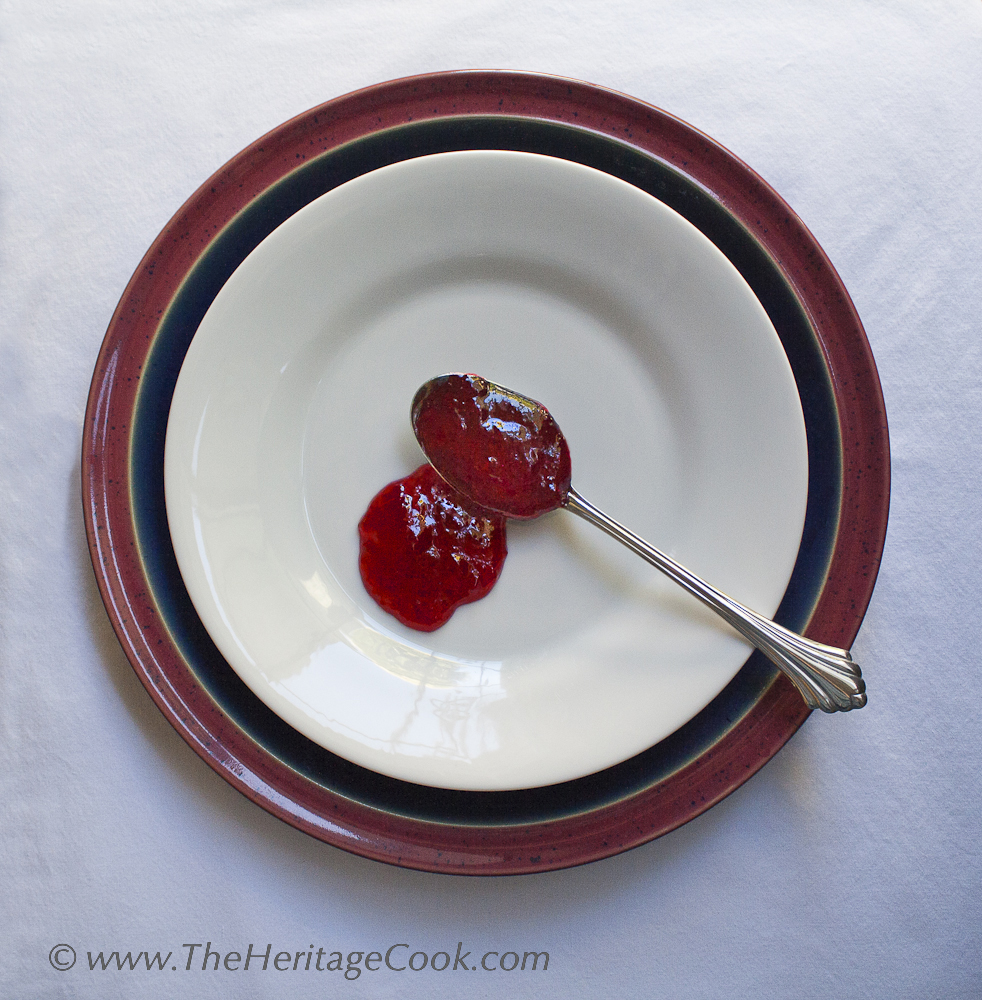
Homemade plum jam
In addition to duck, you can use this same technique with pork, venison, chicken or wild boar to name a few options. And if plum isn’t your favorite, consider using apricot, cherry, pineapple, or orange instead. Rosemary is one of my favorite herbs, but this would also be fantastic with thyme, oregano, or even fresh mint. How creative can you get?
I always make a lot of sauce because it is fantastic on leftovers. You could use it with tortillas to make a twist on tacos or as a spread on bread for duck, pork or chicken sandwiches. If you serve this with a Middle Eastern-style grain dish, pour some of the sauce over that as well and you will have a whole new appreciation for the blending of ancient grains and fruits.
I hope you put this recipe in your “To Make” file and use it soon. It is a wonderful way to create a new treat for your family and friends.
Enjoy!!
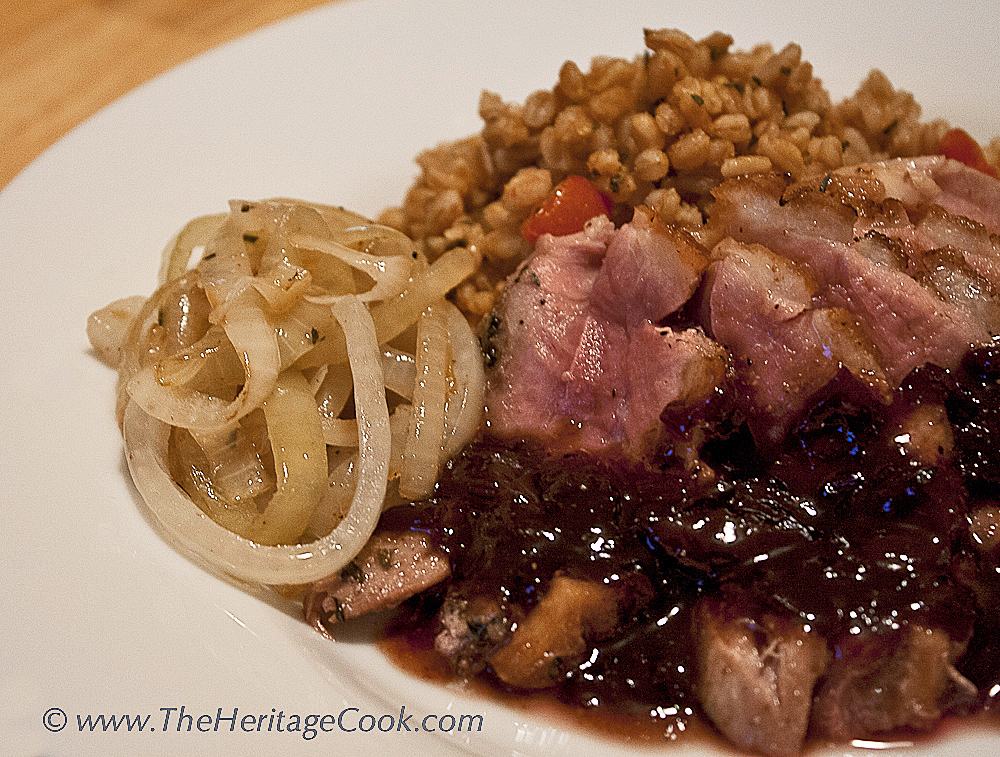

- Duck
- 2 boneless duck breasts (or you can use chicken)
- Kosher salt and freshly ground black pepper
- 1 tsp dried rosemary leaves, crumbled
- 1 Vidalia or other sweet onion, peeled, halved and thinly sliced
- Plum Sauce
- 1/2 cup plum jam (you can substitute any flavor you prefer)
- 1 cup dry white wine or dry vermouth
- 1 cup plum wine
- 1 tsp dried rosemary leaves, crumbled
- 2 tbsp butter
- Prepare Duck: Preheat a skillet over medium heat. Using a sharp knife, score the skin and fat on the top of each breast, without cutting into the meat, creating a diamond pattern with 1/4-inch squares. Pat dry with a paper towel and sprinkle both sides with salt, pepper, and rosemary. Rub seasoning into slits on the skin.
- Start the duck skin-side down in the preheated pan. Immediately reduce the heat to medium-low and cook slowly, rendering the fat. Cook until the skin has browned nicely, about 8 to 12 minutes. Scatter the onions around the edges of the pan about halfway through cooking time.
- Using tongs, turn the breasts over and cook the second side until duck is medium-rare, about 2 minutes more. Stir the onions regularly. The duck is done when the internal temperature reaches 158°F to 160°F, using an instant read thermometer to measure.
- Remove duck from pan and set aside to rest for 5 minutes, tenting loosely with foil. The duck will finish cooking as it rests.
- Continue cooking onions in pan until softened and lightly caramelized, another minute or two, stirring often. Remove from the pan and keep warm. Remove all but 1 tbsp fat from the pan and reserve for another use.
- Make Sauce: Using the same skillet, add the jam, wines, and rosemary to the fat remaining in the pan, whisking until smooth. Bring to a simmer over medium heat. Cook until reduced slightly and thickened, stirring regularly, about 3 minutes. Adjust seasonings with salt and pepper. Add a pinch of sugar if you want more sweetness. Take the pan off the heat and whisk in the butter just before serving. This helps smooth out the sauce and makes the sauce delectable.
- Serving: Slice the duck, cutting against the grain on an angle, with a very sharp knife. Fan out pieces of duck on plate and drizzle sauce over the edge of the slices. Serve immediately, passing additional sauce at the table.
- Yield: 4 to 5 servings
Thank You!
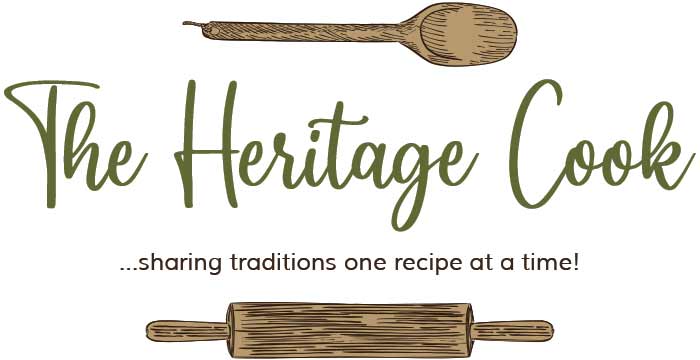

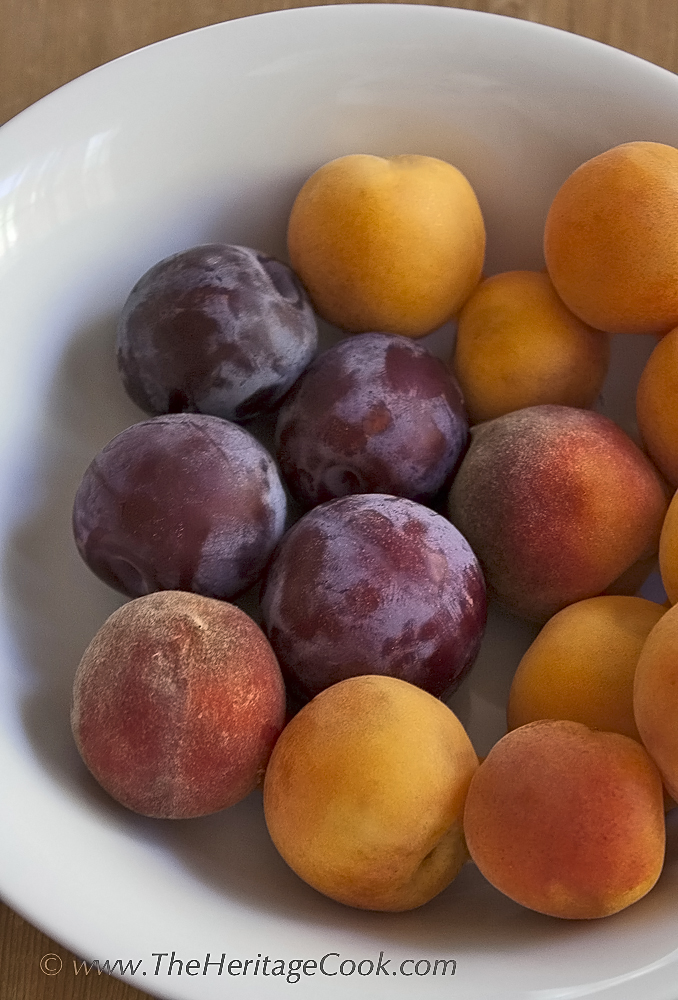
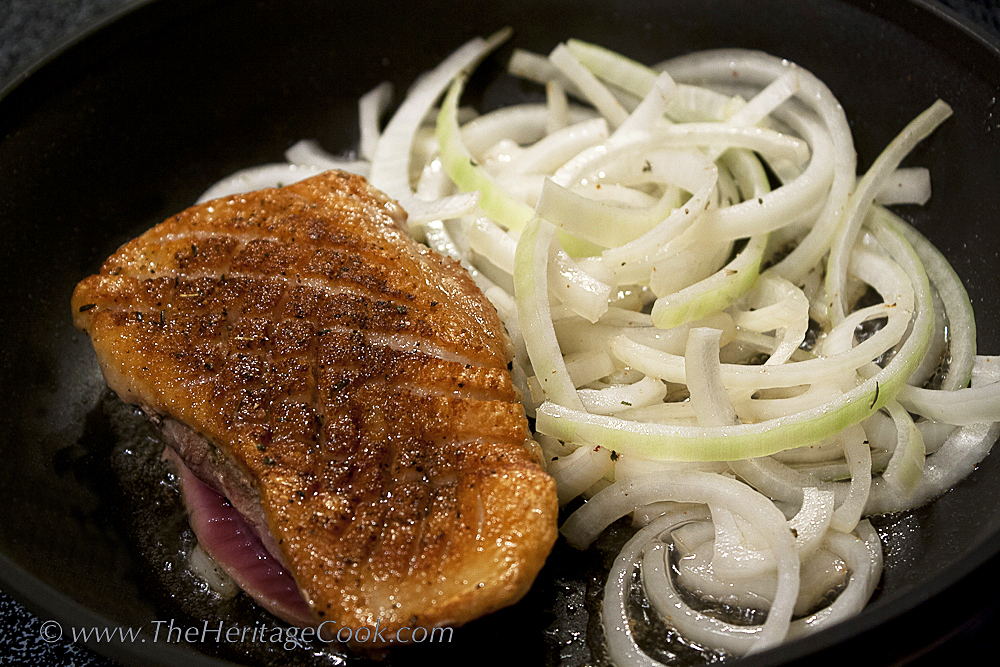
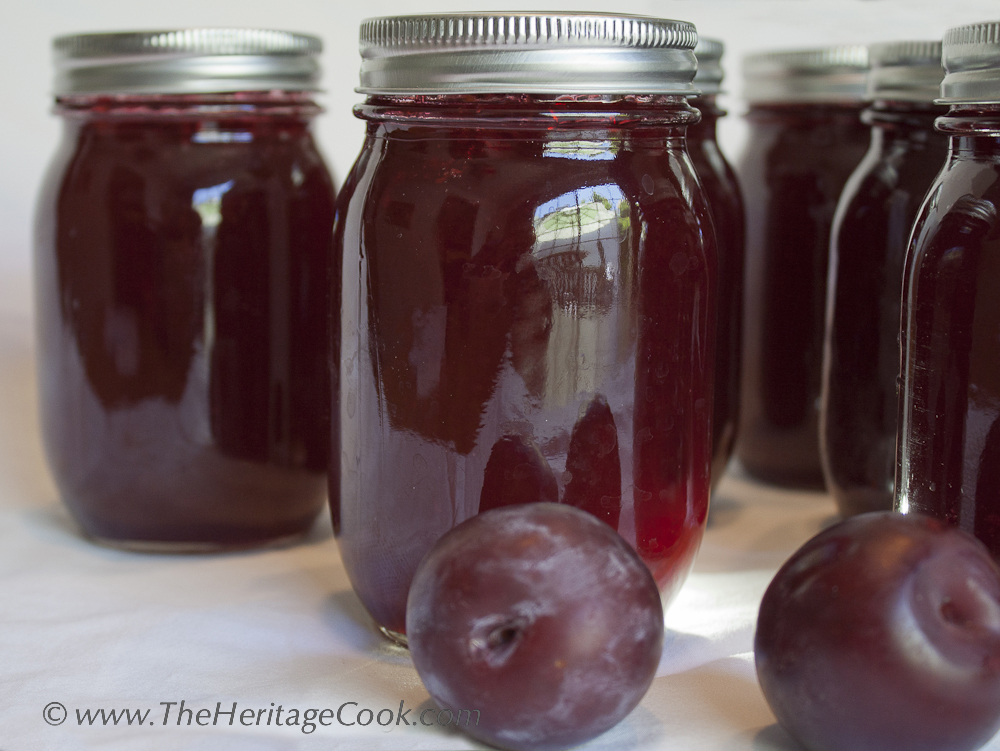
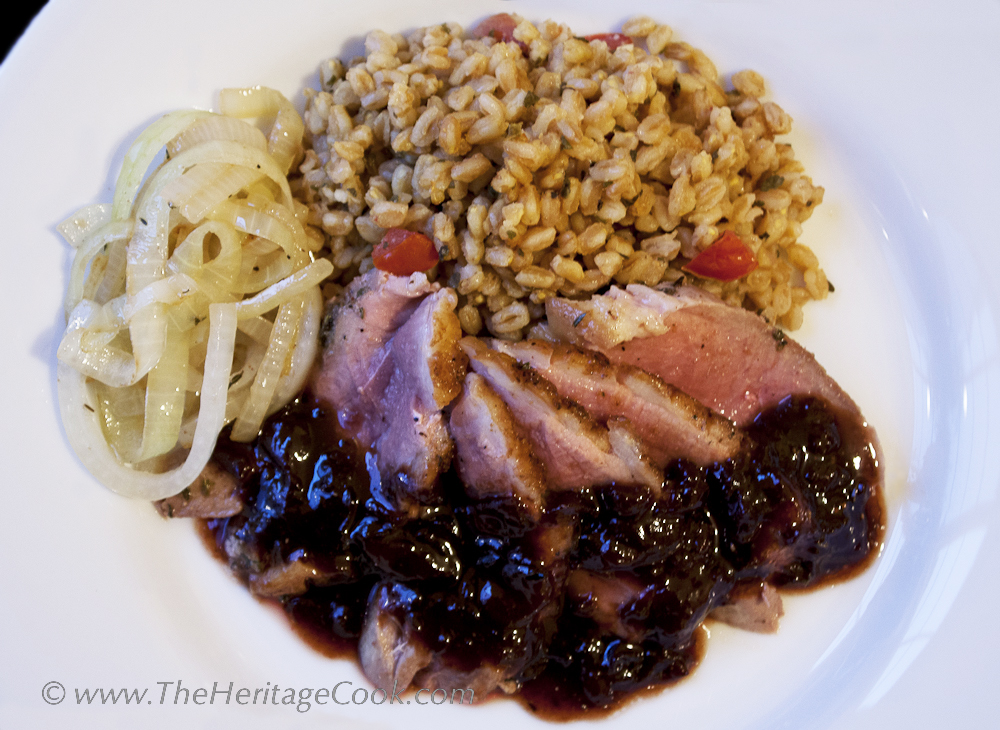

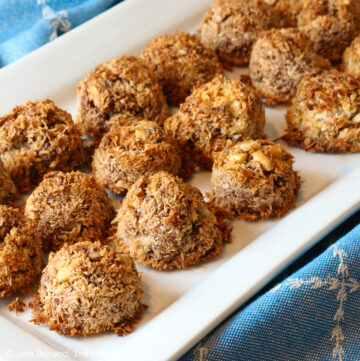
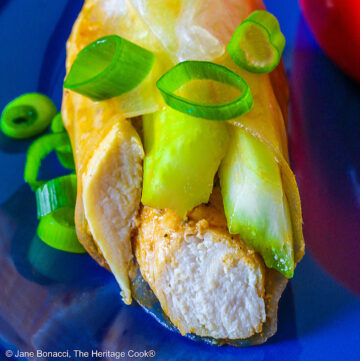
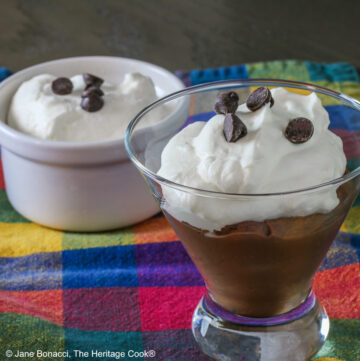
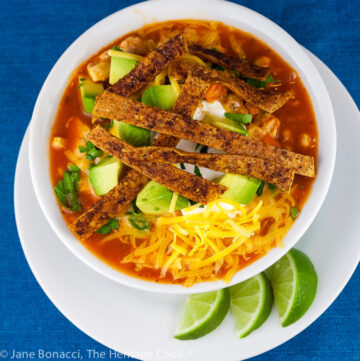
Cathy @ Noble Pig
Absolutely mouthwatering…whoa.
Jane Bonacci, The Heritage Cook
Thank you so much Cathy. Your wines would be the perfect accompaniment!!